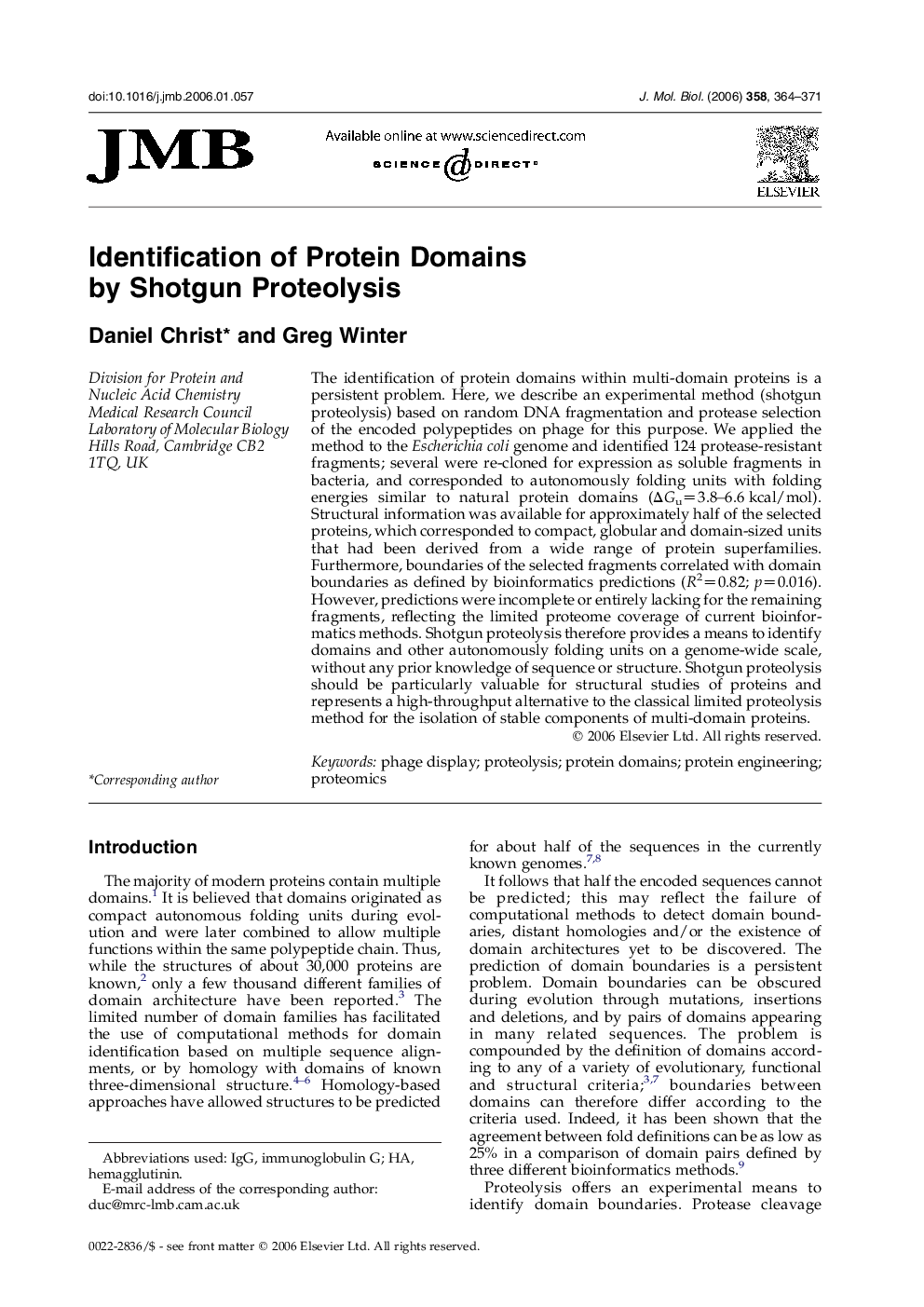| Article ID | Journal | Published Year | Pages | File Type |
|---|---|---|---|---|
| 2189512 | Journal of Molecular Biology | 2006 | 8 Pages |
The identification of protein domains within multi-domain proteins is a persistent problem. Here, we describe an experimental method (shotgun proteolysis) based on random DNA fragmentation and protease selection of the encoded polypeptides on phage for this purpose. We applied the method to the Escherichia coli genome and identified 124 protease-resistant fragments; several were re-cloned for expression as soluble fragments in bacteria, and corresponded to autonomously folding units with folding energies similar to natural protein domains (ΔGu=3.8–6.6 kcal/mol). Structural information was available for approximately half of the selected proteins, which corresponded to compact, globular and domain-sized units that had been derived from a wide range of protein superfamilies. Furthermore, boundaries of the selected fragments correlated with domain boundaries as defined by bioinformatics predictions (R2=0.82; p=0.016). However, predictions were incomplete or entirely lacking for the remaining fragments, reflecting the limited proteome coverage of current bioinformatics methods. Shotgun proteolysis therefore provides a means to identify domains and other autonomously folding units on a genome-wide scale, without any prior knowledge of sequence or structure. Shotgun proteolysis should be particularly valuable for structural studies of proteins and represents a high-throughput alternative to the classical limited proteolysis method for the isolation of stable components of multi-domain proteins.
